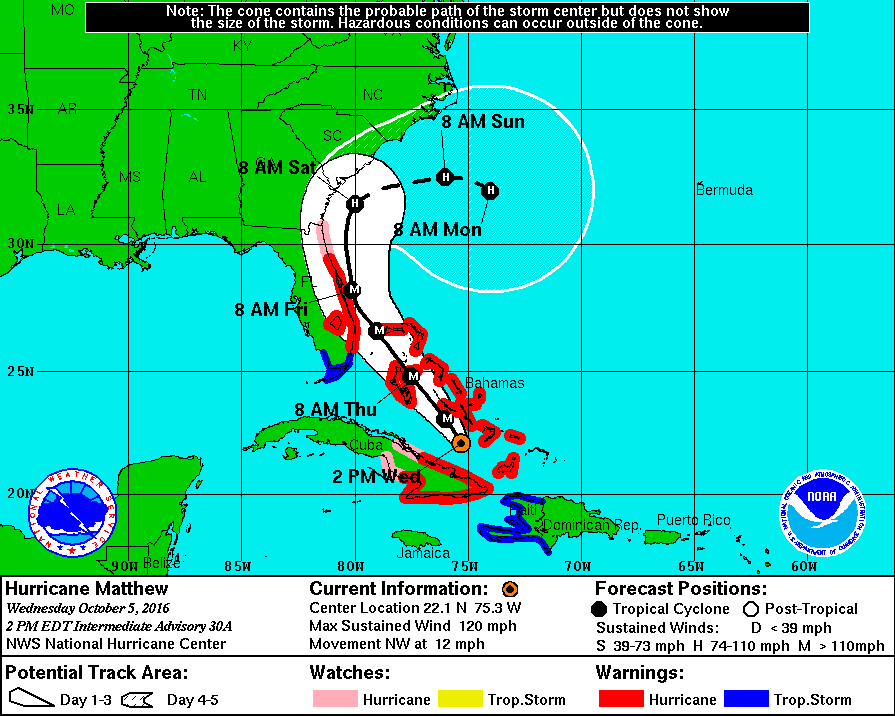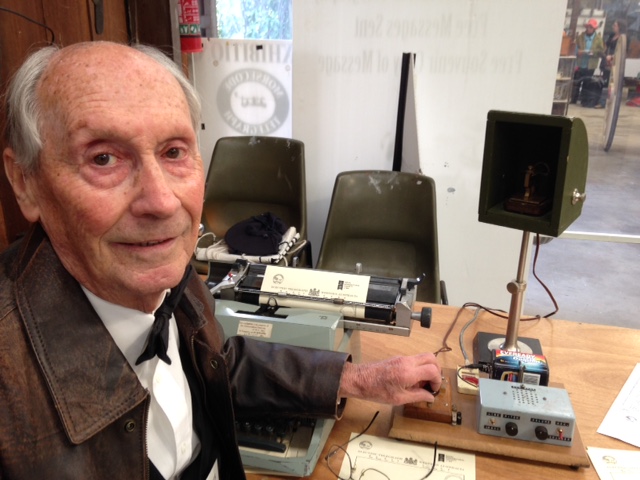From the ARRL, original post here. 10/05/2016

[UPDATED 2016-10-05 @1832 UTC] Amateur Radio Emergency Service (ARES) groups in counties along Florida’s east coast are now at a Level 2 (local) activation for Hurricane Matthew. A Level 1 (statewide) declaration is expected by Thursday, October 6, according to Northern Florida Section Manager Steve Szabo WB4OMM. He said The Statewide Amateur Radio Network (SARnet) will be activated on October 6 as well. SARnet is a network of linked UHF repeaters serving Florida. During a significant emergency, SARnet may be called upon for support through an official state emergency request.
Several US Eastern Seaboard states are ramping up plans to deal with the storm’s arrival. Florida and other coastal states already have issued evacuation orders for some counties, and Florida is bracing for a possible direct hit by Hurricane Matthew. The storm is reported to have caused at least 10 deaths in the Caribbean.
As of 1800 UTC, the National Hurricane Center (NHC) in Miami reported that Hurricane Matthew was about 70 miles north-northeast of Cabo Lucrecia, Cuba, and about 70 miles south of Long Island in the Bahamas. The storm is packing maximum sustained winds of 120 MPH and is moving northwest at 12 MPH. After slamming Haiti, the storm’s intensity diminished to category 3. Hurricane and tropical storm watches and warnings are in effect for parts of Florida. The storm is expected to strengthen as it approaches the US, and its effects could last through the weekend.
Hurricane warnings are in effect for Broward, Palm Beach, Martin, St Lucie, Indian River, and Okeechobee Counties, along with Lake Okeechobee. A hurricane watch is in effect for Nassau, Duval, St Johns, Flagler, Clay, Putnam, Volusia, Brevard, Osceola, Orange, and Seminole Counties. Tropical storm warnings have been posted for Miami-Dade, Monroe, Collier, Hendry, and Glades Counties. A tropical storm watch remains in effect for Lake, Sumter, Polk, Highlands, Marion, Union, Bradford, Baker, and Alachua Counties.
“Interests elsewhere in the Florida Peninsula and the Florida Keys should monitor the progress of Matthew,” the NHC said. The storm remains more than 400 miles southeast of Miami Beach. Emergency operations centers in Daytona Beach and in Volusia County are on partial activation. The Florida State EOC is monitoring. Continue reading →



